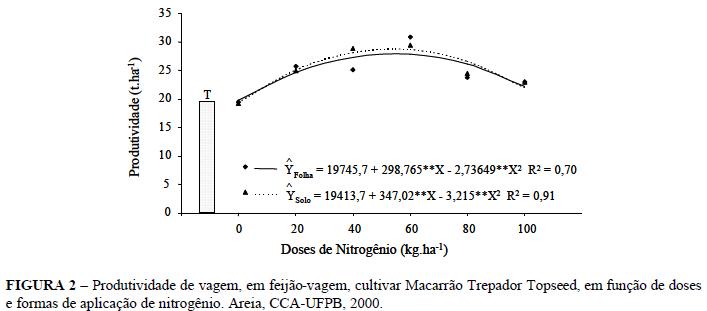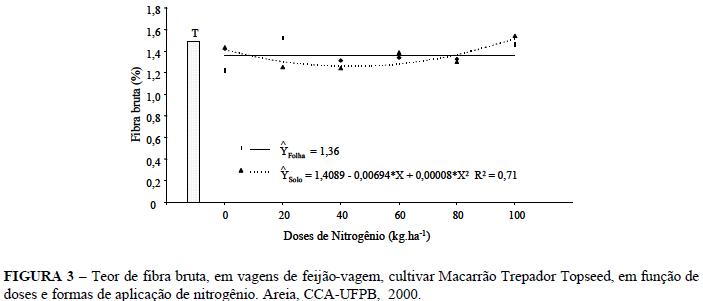With the objective of evaluating levels and sources of organic matter in the culture of the snap-bean, Macarrão Trepador cultivar, it was set an experiment in field conditions, from April to August 2000, in the Center of Agricultural Sciences at the Federal University of Paraíba, Brazil. The experimental design was randomized blocks, in a factorial scheme 6 × 2 + 1, with four levels of N (0, 20, 40, 60, 80, and 100 kg/ha), two application forms (soil and foliar) and a check (without fertilization), with four replications. It were used plots with 20 plants, spaced 1 × 0.5 m. The results showed significant effect of N levels and forms of application for precocity and for yield and fiber in the pods. The levels of 21 kg/ha and 20 kg/ha of applied N, respectively in the leaf and in the soil, provided more precocious plants, although flowering later than the check. The productivity of pods reached estimated maximum values, 29 and 28 t/ha, in the levels of 54 and 55 kg/ha of N applied in the soil and through foliar application, respectively. The level of 44 kg/ha provided the smallest percentage of fiber in the pods (1%). The most economic level of N applied in the soil and through foliar application was 54 kg/ha, resulting in an estimated production of 29 and 28 t/ha of pods, respectively.
Phaseolus vulgaris; pod; nitrogen fertilization; yield; fiber



